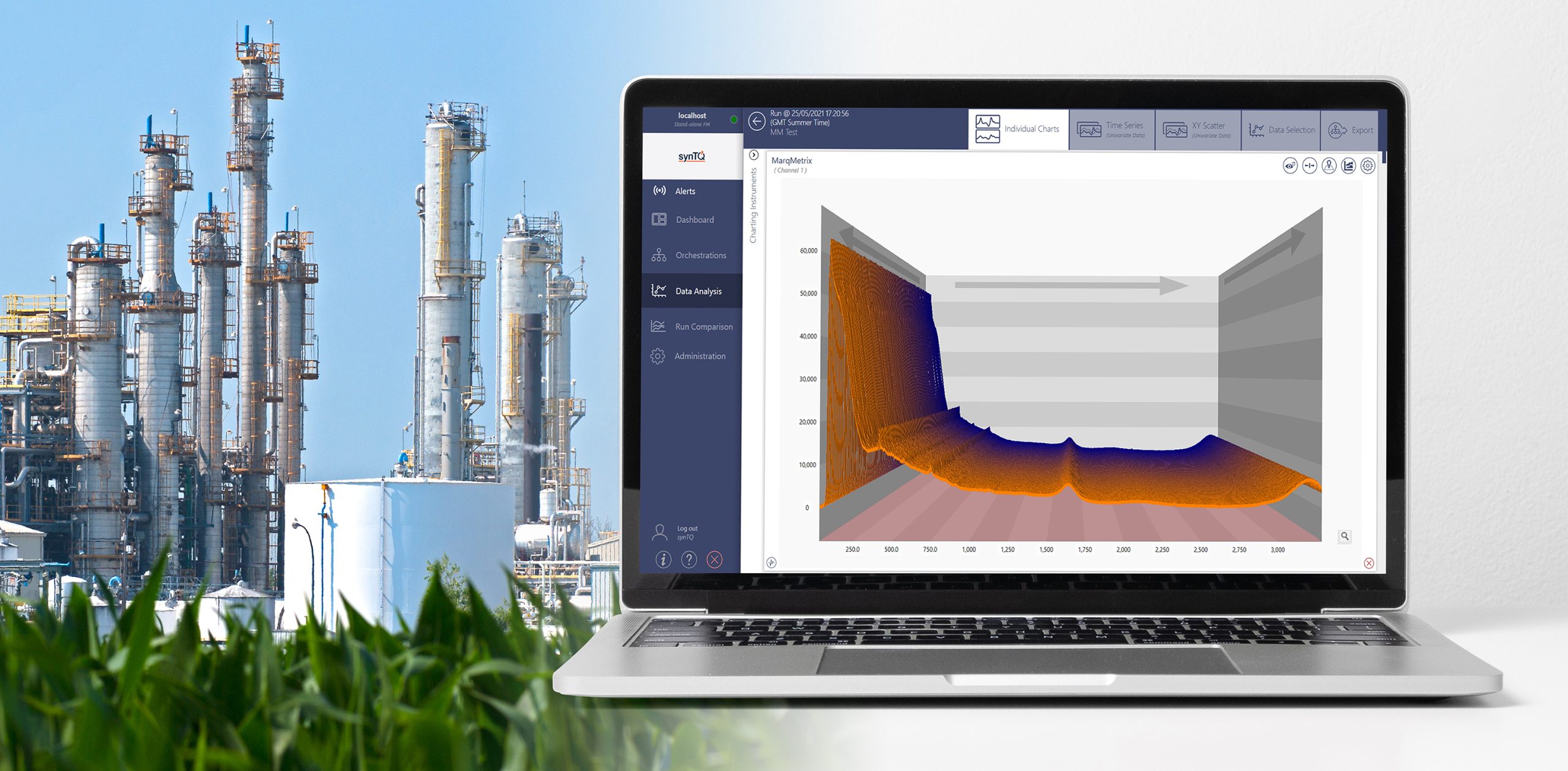Refineries and crude oil processing plants are being upgraded to use more sustainable feedstocks to produce greener fuels and help create a circular economy for materials. Effective, data-driven control systems are needed to ensure highly efficient, responsive and flexible processing activities. These, in turn, enable facilities to maintain low carbon footprints while delivering high-quality products at competitive prices.
Martin Gadsby, Director at Optimal Industrial Technologies, looks at how advanced process control can help to overcome the challenges of converting refineries into renewable fuel facilities.
Refineries and crude oil processing facilities can benefit from innovative technologies that can be applied to existing plants to help process resources with a reduced environmental impact. For example, a number of leading companies have already adapted their existing equipment to produce biofuels.
An established process is the use of crops or lignocellulosic materials to obtain bioethanol. Generally, the raw materials first undergo a pre-treatment to separate hemicellulose and lignin from cellulose. Subsequently, cellulose is hydrolysed to obtain fermentable sugars and these are converted into ethanol. This stage is followed by distillation to purify the fuel.
It is also possible to produce biodiesel from waste oils and fats, such as bleachable fancy tallow, vegetable oils, e.g. soybean and inedible corn oils, or algae. The feedstock is pre-processed to reduce the content of impurities, water, phospholipids and other plant matter. The glycerides undergo transesterification to obtain fatty acid methyl esters (FAME), which are consequently purified to obtain high-octane biodiesel.
In addition to these established methods, new solutions are constantly being developed. In particular, Waste-to-Fuel processing technologies offer a way to create a circular economy for currently unrecyclable materials, such as certain single-use plastics and municipal solid waste. At the same time, processes to reduce the emission of waste gases from industrial activities are also coming to the fore.
These alternatives are often based on pyrolysis, a process that heats the waste without oxygen to decompose the polymers and gasify them into short hydrocarbon chains. Impurities, such as sulfur and chloride, are removed while the gaseous hydrocarbons are condensed and separated into relevant oil fractions.
Identifying the optimum conditions for sustainable production
These decarbonising strategies greatly differ in the feedstocks used as well as in the main processes that they apply, namely fermentation, transesterification and pyrolysis. However, the novel methods they use share some common challenges.
Businesses interested in adapting their crude oil facilities may not have the necessary in-depth process understanding to create highly effective setups. In fact, analysing processing data and leveraging comprehensive actionable insight is key to maintaining ideal operating conditions. These conditions, in turn, lead to optimum energy efficiency and cycle times as well as high product quality while reducing off-specification materials and waste.
One particularly common challenge that refineries and oil processing plants face is the implementation of highly effective separation processes. The raw materials used often contain a wide variety of impurities in high concentrations. Moreover, these are usually very similar to the main components, making it particularly difficult to remove them without incurring thermal degradation of key chemicals. Consequently, feedstock pre-treatment and product purification can play an essential role in determining the end quality, processing time, energy efficiency and ultimately environmental impact of decarbonising strategies for the oil and gas sector.
Similarly, the reaction conditions applied during fermentation, transesterification and pyrolysis can greatly influence a business’ profitability. While under-processing can compromise end product quality, over-processing is energy- and time-ineffective.
A data-driven system that can monitor the physical, chemical and/or biological properties of materials in real time; determine the desired product quality and use this information to swiftly adjust process conditions is crucial to addressing the aforementioned challenges. Process Analytical Technology (PAT) is a framework that offers all these features.
Data-driven process control at the core of sustainable processing
PAT is based on Quality by Design (QbD) principles, which aim to build quality into products from the earliest design phase rather than testing them at the end of the manufacturing process. According to this approach, a design space of operating Critical Process Parameters (CPPs) is defined to ensure specified Critical Quality Attributes (CQAs) are delivered in the end material.
During processing activities, PAT utilises a network of sensors and analytical instruments to observe the relevant material properties via on-line, in-line or at-line measurements. The univariate and multivariate data obtained, such as near-infrared (NIR) or UV-vis spectra, are sent to key software equipment, such as chemometric and predictive modelling tools for data processing, analytics and visualisation, e.g. multivariate analysis (MVA) and chemometric modelling tools.
By using these software solutions, refineries can generate a comprehensive knowledge of the materials and processes used. In particular, it is possible to characterise the feedstock, rather than relying on abstract, pre-set properties. For example, PAT has been successfully applied to determine lignin content in plant-based materials used for bioethanol production. More precisely, infrared spectroscopy combined with advanced chemometrics models can help biorefineries adjust their pre-treatment, fermentation and pyrolysis activities on the fly to address the specific lignocellulosic biomass being processed, optimising throughput.1
Also, processing plants can leverage accurate quality predictions for dynamic control. In effect, facilities can benefit from real-time process visualisation as well as the ability to manually or automatically change the CPPs to optimise the operating conditions and CQAs. For instance, ethyl ester content prediction models based on NIR measurements have been effectively applied to support biodiesel production practices. Specifically, this method has been used to monitor on-line alkali-catalysed transesterification reactions of soybean oil and ethanol,2 helping biorefineries maintain optimum processing conditions. This strategy is also highly beneficial in determining when the reaction is complete, avoiding under- and over-processing.
Data management for effective PAT frameworks
In order to create a truly holistic and immediate understanding of their new processes, refineries should incorporate a knowledge management platform to support their PAT strategies. This software can gather and share data with sensors and analysers on the processing line as well as MVA tools and industrial automation devices. Such devices include programmable logic controllers (PLCs), distributed control systems (DCSs) as well as supervisory control and data acquisition (SCADA) platforms that regulate refinery operations. The platform also interfaces with higher-level management systems, such as manufacturing execution systems (MESs), thus combining the insight provided by different levels of the automation pyramid and presenting it in an easily understandable manner to subject matter experts.
Besides providing a central hub, an advanced PAT knowledge management solution has the ability to directly control multiple CPPs at the same time to obtain the desired CQAs. This can be performed automatically by means of an intelligent control algorithm. By adopting this technology, refineries can do more than simply keep CPPs as close as possible to their set-points. In fact, they can enhance the flexibility and adaptability of their processes while enhancing efficiency and end product quality.
Additionally, as continuous flow applications become increasingly common, refineries can benefit from a PAT knowledge manager that is equipped with flowsheet modelling functions for dynamic material tracking and tracing, which also supports closed-loop feedback process control.
These capabilities provide important insights into the movement of materials and products through continuous processes, as well as in-depth characterisations, from raw materials to final product batches. Therefore, such a model can be particularly beneficial when feedstocks with highly variable levels of impurities are used.
Total quality management for green products
A PAT framework can help oil processing facilities to adopt more sustainable materials and practices by addressing key production challenges while providing advantages that can enhance a business’ competitiveness in the marketplace. In particular, such a system enables facilities to have the in-depth understanding needed to maintain optimum process conditions at all times as well as enhanced control over their operations. As a result, PAT can reduce waste, processing time and ultimately energy consumption, helping to make decarbonisation practices more commercially and environmentally sound.
To maximise the benefits that can be achieved with PAT setups, refineries need to implement a knowledge management platform that can support real-time process control. An example of a highly effective solution that delivers these capabilities is the total quality management software synTQ, which is already widely used in demanding industries where advanced monitoring strategies are required, such as pharmaceutical manufacturing. The software has been proven to help businesses cut the environmental impact of their manufacturing and processing activities while supporting the delivery of high-quality products at competitive prices.
LinkedIn page: https://www.linkedin.com/company/optimal-industrial-technologies



